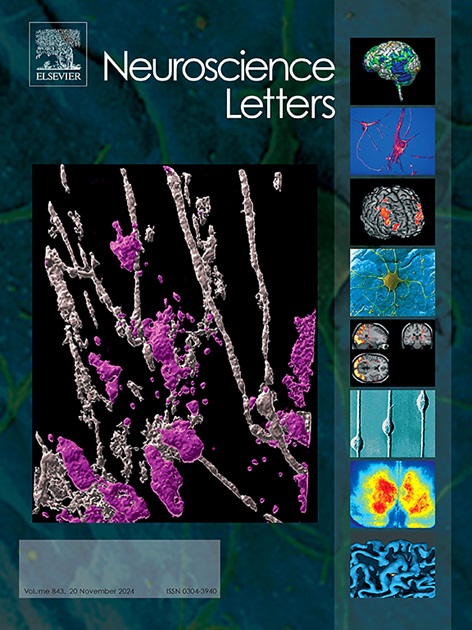The shallow water test (SWT) as a novel behavioral paradigm to measure anxiety- and despair-like states in zebrafish
IF 2.5
4区 医学
Q3 NEUROSCIENCES
引用次数: 0
Abstract
Affective disorders represent psychiatric conditions characterized by mood and emotional dysregulations, with depression and anxiety being among the most prevalent and frequently co-occurring. Depressive- and anxiety-related disorders can be associated with monoaminergic dysfunction and dysregulation of the GABAergic system. Stress plays a crucial role in the development and progression of these disorders, contributing to neurochemical disbalances. Because despair, a core symptom of depression, lacks well-established paradigms in zebrafish models based on naturalistic conditions, our goal was to report the use of the shallow water test (SWT) as a novel paradigm to assess despair-like behavior in zebrafish when placed in an unescapable shallow water environment. Basically, we exposed zebrafish to two distinct aversive conditions: mild electric shock (ES) as a physical stimulation or the conspecific alarm substance (CAS) as a naturalistic chemical cue (Experiment 1); and tested two pharmacological interventions: fluoxetine and diazepam (Experiment 2). Both stressors significantly reduced distance traveled, absolute turn angle, and average velocity, but only CAS increased the latency to mobility. While diazepam increased distance traveled, maximum speed, and average velocity, fluoxetine had no significant effects. Overall, these findings suggest the SWT as a sensitive and reliable tool for evaluating affective-like states in zebrafish, with implications for translational neurobehavioral research on affective disorders and potential therapeutic interventions.
浅水测试(SWT)作为一种新的行为范式来测量斑马鱼的焦虑和绝望状态。
情感性障碍是一种以情绪和情绪失调为特征的精神疾病,其中抑郁和焦虑是最普遍和经常同时发生的。抑郁和焦虑相关障碍可能与单胺能功能障碍和gaba能系统失调有关。压力在这些疾病的发展和进展中起着至关重要的作用,导致神经化学失衡。由于绝望是抑郁症的核心症状,在基于自然条件的斑马鱼模型中缺乏完善的范式,因此我们的目标是报告使用浅水测试(SWT)作为一种新的范式来评估斑马鱼在不可避免的浅水环境中出现的绝望行为。基本上,我们将斑马鱼暴露在两种不同的厌恶条件下:作为物理刺激的电击(ES)和作为自然化学线索的同种报警物质(CAS)(实验1);并测试了两种药物干预:氟西汀(FLU)和地西泮(DZP)(实验2)。两种压力源都显著降低了行驶距离、绝对转弯角度和平均速度,但只有CAS增加了移动延迟。虽然DZP增加了行驶距离、最大速度和平均速度,但FLU没有显著影响。这些发现表明,SWT是评估斑马鱼情感样状态的一个敏感和可靠的工具,对情感障碍和治疗干预的转化神经行为研究具有重要意义。
本文章由计算机程序翻译,如有差异,请以英文原文为准。
求助全文
约1分钟内获得全文
求助全文
来源期刊

Neuroscience Letters
医学-神经科学
CiteScore
5.20
自引率
0.00%
发文量
408
审稿时长
50 days
期刊介绍:
Neuroscience Letters is devoted to the rapid publication of short, high-quality papers of interest to the broad community of neuroscientists. Only papers which will make a significant addition to the literature in the field will be published. Papers in all areas of neuroscience - molecular, cellular, developmental, systems, behavioral and cognitive, as well as computational - will be considered for publication. Submission of laboratory investigations that shed light on disease mechanisms is encouraged. Special Issues, edited by Guest Editors to cover new and rapidly-moving areas, will include invited mini-reviews. Occasional mini-reviews in especially timely areas will be considered for publication, without invitation, outside of Special Issues; these un-solicited mini-reviews can be submitted without invitation but must be of very high quality. Clinical studies will also be published if they provide new information about organization or actions of the nervous system, or provide new insights into the neurobiology of disease. NSL does not publish case reports.
 求助内容:
求助内容: 应助结果提醒方式:
应助结果提醒方式:


